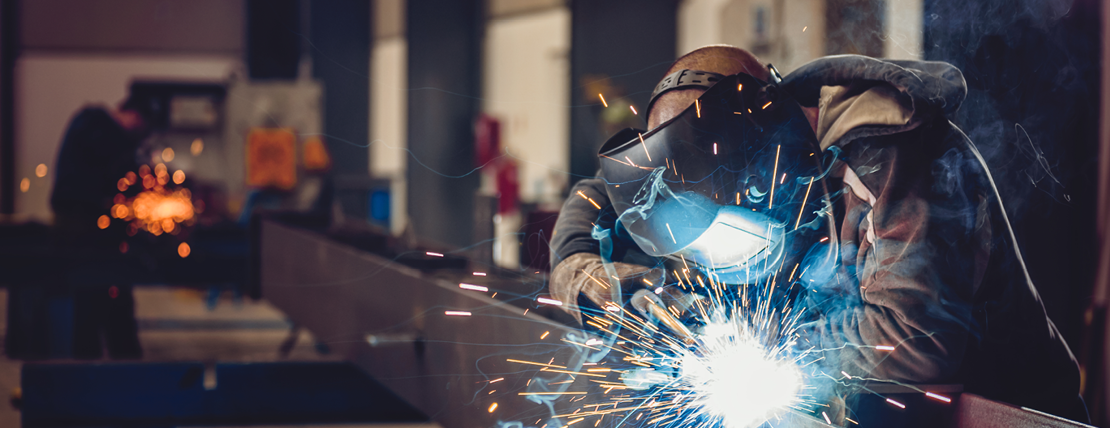• Establish DEI as part of the business strategy. Making diversity, equity and inclusion initiatives part of the organization’s values and a key component of performance evaluations increases the chances of success.
• Set the tone from the top. The company’s leadership should certainly embody the organization’s DEI efforts, but it should start as a bottoms-up, grassroots effort.
• Tie DEI to your organizational culture. Making DEI part of the organization’s DNA lets employees know that the company focuses on DEI because it is of value.
• Focus on the doable. While there might be a tendency to gauge every action, U.S. Steel focuses on what the company can measure, and doing it consistently and transparently.
It would be easy to assume there is not a single DEI chromosome in the corporate DNA of a macho, unionized heavy industry such as steelmaking.
But officials at U.S. Steel — the granddaddy of the industry — point to a diversity, equity and inclusion initiative launched four years ago as a turning point in the 120-year history of the company.
“People don’t think an older company can accomplish what we have in four years,” said Barry Melnkovic, the organization’s chief human resources officer. “DEI at U.S. Steel has been called the best-kept secret in corporate America.”
The DEI movement began in 2017 when Dave Burritt was named CEO of the Pittsburgh-based corporation.
“He emphasized human capital investment and DEI is part of that,” Melnkovic said. “I have an HR investment thesis that is [focused on analytics]. We can actually show return [on investment] by the practice.”
One of those metrics is retention, pointed out Matt Wilding, Ph.D., director of HR strategy, analytics and talent acquisition at U.S. Steel. “During the pandemic and ‘Great Resignation,’ our quit rates were under 5%, while industry-wide it was 25% or higher.”
U.S. Steel has received several DEI-related honors, including being identified as one of the “Best Places to Work for LGBTQ Equality” by maintaining a perfect score and meeting all criteria for the Human Rights Campaign Corporate Equality Index and being named a “Leave Innovator” by the National Partnership for Women and Families for its caretaker policy.
“Best for All”
DEI is part of an enterprise-wide strategy of “Best for All” — employers, suppliers, shareholders and the planet, Melnkovic said.
It has three components: Lower costs, winning competitive markets and “move up the talent.”
That third component includes physical safety; talent upskilling and DEI — building a diverse, equitable and inclusive organization.
“We look at every opening as an opportunity for DEI,” said Melnkovic, who received the 2021 Pennsylvania LGBTQ+ Ally Award from the National Diversity Council.
Make DEI a part of the business, not a nice side frill, he said. “It should be part of the charter and mission statement. There should be metrics in place, and it should be part of performance management for key leaders.”
A big part of the DEI movement has manifested in an impressive list of inclusive benefits, including:
• Parental leave — up to eight weeks off for either parent follow the birth/adoption of child with birth mothers eligible for six to eight weeks of short-term disability;
• Infertility coverage;
• Dependent care flexible spending account (FSA) with the company matching up to 50% of the IRS limit;
• Bereavement leave extended to 15 days for immediate family;
• Vacation purchase program, which allows workers to purchase additional time off;
• Adoption assistance, with up to $4,000 for eligible adoption-related expenses;
• Health and welfare program coverage for eligible domestic partners and children; and
• Gender confirmation procedure coverage, with medical coverage for treatments and medications associated with gender reassignment.
Negotiation Time
More than three-fourths (78%) of U.S. Steel’s 14,400 employees are union members. And, benefits will be on the table when U.S. Steel and the United Steelworkers of America (USW) begin contract negotiations in mid-June. The current four-year collective bargaining agreement (CBA) expires Sept. 1 of this year.
Although USW declined to be interviewed for this article, a spokesman indicated the union is currently surveying and meeting with members to determine priorities, adding that some of those benefits are addressed in current agreements while others may be addressed in CBA negotiations.
The scope of the DEI program falls within CBA parameters, according to Melnkovic.
“There is equality in opportunity. It’s nondiscriminatory. There has been no pushback in terms of approach to DEI,” he said, adding the union employees participate in such DEI activities as events, community services and employee resource groups (ERGs).
Those ERGs have played a key part in U.S. Steel’s DEI efforts, Melnkovic explained. “The tone must be set up at the top, but it needs to be a bottom-up grassroots effort. You meet in the middle,” he said.
“You need to unleash the power of the people — getting all employees heard.”
U.S. Steel’s DEI efforts started with three ERGs and has grown to eight, recently adding a group that works on sustainability efforts. Other ERGs provide support for such groups as new employees, LGBTQ+ people, people with disabilities, veterans, women and parents.
That top-down aspect of the DEI equation could be seen when Burritt, Melnkovic and other C-suiters led scores of U.S. workers and families marching in the 2019 Pittsburgh Pride parade.
Keep It Simple
While DEI can be a lofty, abstract goal, start by focusing on the doable, Melnkovic and Wilding advise.
“Don’t be afraid of going too simple and doing it well,” Wilding said. “There is a tendency to gauge every action. Focus on what you can measure. Be clear and transparent. Whatever you measure, make it consistent and visible.
“Be clear and open about what we are undertaking. Be transparent about what has and hasn’t worked and where you have gaps.”
Don’t start a DEI program unless you are certain you can sustain it, Melnkovic said. “We had skeptics when we started it in 2017, saying it won’t stay around. But we said we will ensure that we don’t lose focus during the next downturn. We didn’t lose focus but accelerated during the 2018-19 downturn (in the steel industry) and during COVID.”
And, lead DEI efforts with your strengths, Wilding said. “The ERGS highlighted safety first. That’s core to our culture.”
The corporation’s focus on safety goes back to before it was U.S. Steel. Industry pioneer and philanthropist Andrew Carnegie instituted safety in 19th century steel mills. His Carnegie Steel would later be one of the founding companies of U.S. Steel.
DEI efforts also focus on unity, building on the strong pride in work in U.S. Steel workers, many of whom are second- or third-generation employees, Wilding said.
And, don’t let lack of money be a roadblock to building DEI, said Melnkovic. “It’s not a question of budget, it is a question of will. If you have focused, committed people, they will drive the change.”







